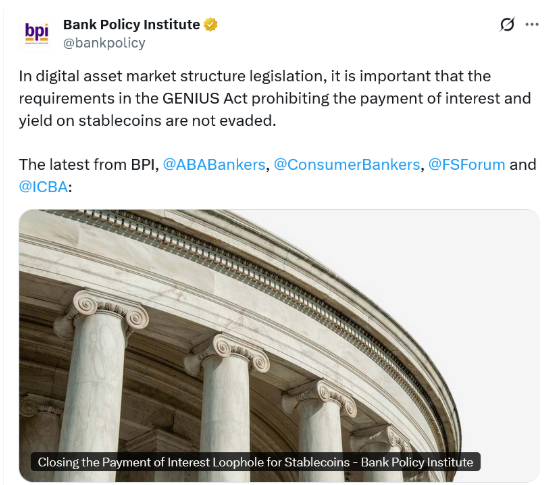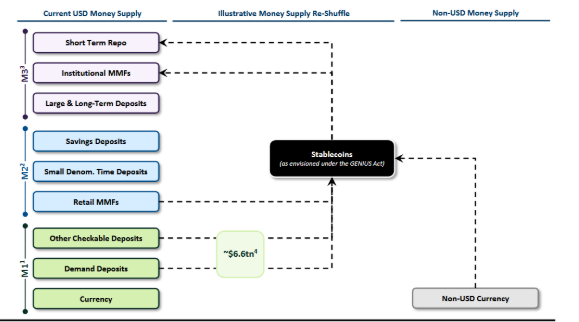Financial lobby warns of potential $6.6T deposit outflow from traditional banks
Several US banking associations, led by the Bank Policy Institute (BPI), are calling on Congress to amend the newly enacted GENIUS Act to close what they describe as a “loophole” allowing stablecoin issuers to indirectly offer yields through affiliated companies.

In a letter sent Tuesday, the groups warned that without changes, stablecoin issuers could bypass the law’s ban on interest payments by partnering with crypto exchanges or related entities. The BPI estimates such a practice could trigger up to $6.6 trillion in deposit outflows from the banking sector, potentially disrupting the credit supply to households and businesses.
“The result will be greater deposit flight risk, especially in times of stress, that will undermine credit creation throughout the economy,” the letter stated.
Why Banks See a Threat
Under the GENIUS Act, stablecoin issuers cannot pay interest or yield directly to token holders. However, the law does not explicitly restrict affiliated platforms from offering rewards for holding stablecoins — an incentive already used by exchanges such as Coinbase and Kraken for USDC holders.

Banking groups, including the American Bankers Association, Consumer Bankers Association, Independent Community Bankers of America, and the Financial Services Forum, argue that stablecoins differ fundamentally from bank deposits and money market funds because they do not fund loans or invest in securities to generate returns.
“These distinctions are why payment stablecoins should not pay interest the way highly regulated banks do on deposits,” BPI wrote.
The current stablecoin market cap is $280.2 billion, far smaller than the $22 trillion US money supply reported by the Federal Reserve in June. The market is dominated by Tether (USDT) at $165 billion and USD Coin (USDC) at $66.4 billion, according to CoinGecko.
Supporters of the GENIUS Act argue that promoting US dollar–pegged stablecoins could strengthen the dollar’s role as the world’s reserve currency. The US Treasury projects the stablecoin market could reach $2 trillion by 2028.
Still, the banking industry warns that yield-bearing stablecoins could shift a significant portion of deposits away from traditional banks, pushing up interest rates and reducing credit availability for the broader economy.
Disclaimer
This content is for informational purposes only and does not constitute financial, investment, or legal advice. Cryptocurrency trading involves risk and may result in financial loss.
